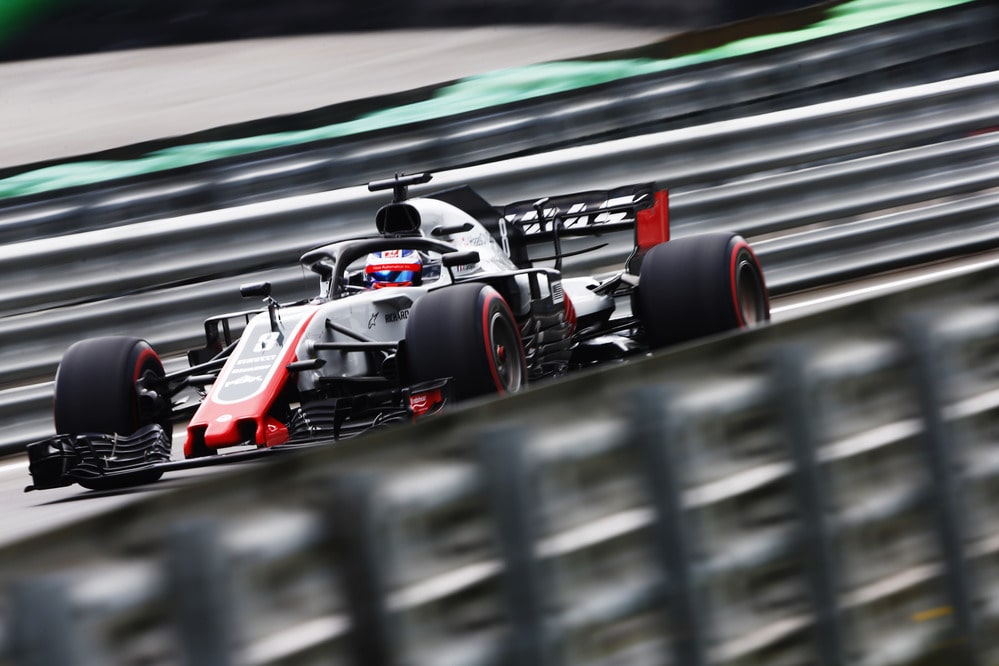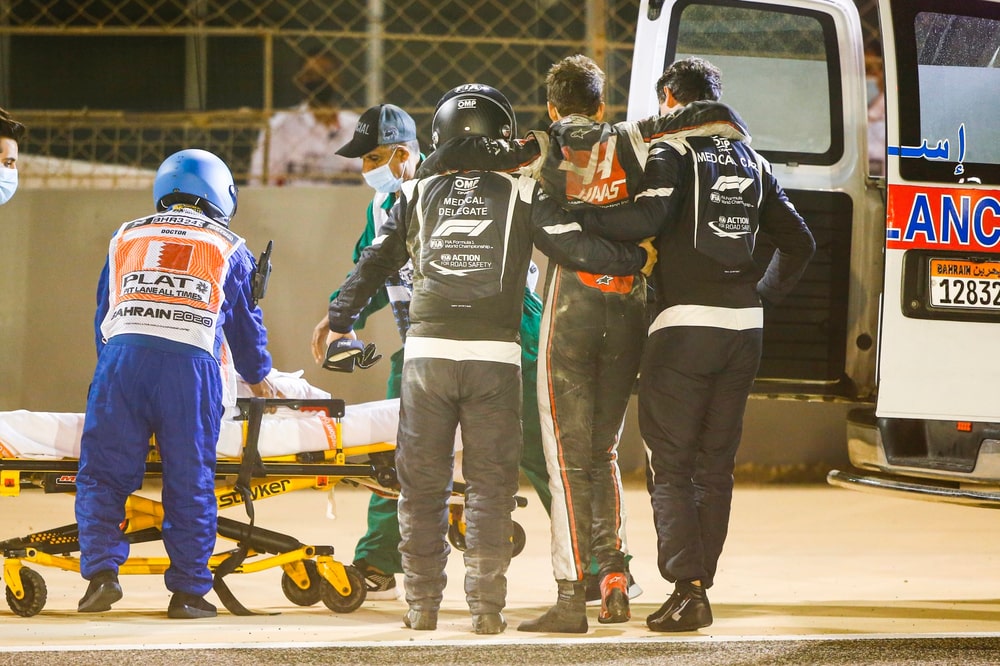
Romain Grosjean’s horrific crash at the start of the 2020 Bahrain Grand Prix showed the world how far safety has come in Formula One over the past 70 years. It also showed us the benefit of having the controversial Halo device on the cars. But perhaps most importantly, it highlighted an issue with many circuits on the F1 calendar.
Armco barriers are present at many of the circuits that F1 currently visits. Some of the circuits even use it as their primary type of barrier. The Red Bull Ring, Monza, Monaco and Bahrain are just a few circuits that come to mind where Armco barriers exist on some part of the circuit. But why does F1 still use these dangerous barriers?

Armco barriers have always been a danger in all motorsport, not just Formula One. It’s not uncommon to see races delayed to make repairs to these barriers after big impacts. But aside from the annoyance when these barriers need repairs, they can also hurt drivers.
In the wake of Grosjean’s accident, photos of John Love’s car wedged into the barriers around the Kyalami Circuit in South Africa at an event in 1971. He was not seriously hurt, but he easily could have been.
Then we are reminded of other Armco related incidents, like the fatal accident of Jochen Rindt during qualifying for the 1970 Italian Grand Prix in which his car punched through the Armco barriers. Or you can remember back to Francois Cevert, who was killed in a qualifying accident in the 1973 United States Grand Prix at Watkins Glen after his upside-down car slid along the top of the metal barrier.
You can even look at incidents outside of Formula One. Take, for example, the rally accident that effectively ended Robert Kubica’s Formula One career back in 2011. He crashed into a metal barrier, which punctured through the car, severely injuring the Polish driver.
But perhaps the most chillingly accurate comparison to the accident we witnessed in the 2020 Bahrain Grand Prix is Helmuth Koinigg’s accident at the start of the 1974 United States Grand Prix at Watkins Glen. Early in the race, he suffered a mechanical failure that sent the car into the barrier at a relatively slow speed. The car punched through the barrier. Without the Halo to protect his head, Koinigg was killed instantly.
Some of these incidents are quite old examples, but the threat of Armco barriers on driver safety never really went away. It’s always been there and it was only a matter of time before F1 would be reminded of the danger.
These barriers are just not a good idea, as they have a number of flaws: Metal bends; The rails have jointed instead of being one long solid piece; There are multiple rails; The pointy nose of an open-wheel car is a perfect tool to punch through these barriers. This is what we saw in Bahrain.
It’s time for F1 to replace the Armco barriers with safer alternatives to prevent repeats of this type of accident. There are moments in Formula One that highlight what changes are necessary to improve safety. This is one of those moments.
More than half a century ago, Formula One circuits were lined with straw bales. That was until Lorenzo Bandini’s fatal crash in the 1967 Monaco Grand Prix showed why they were dangerous.
Just a few years ago, Formula One had no head protection for drivers. That was until the accident of Jules Bianchi in 2014 and Justin Wilson of IndyCar the following year showed why that’s dangerous. Now we (thankfully) have the Halo.
The 2020 Bahrain Grand Prix and previous accidents have shown why Armco barriers are dangerous. It’s time for Formula One to act.

Most circuits already use an assortment of different barrier types, which pose less of a safety risk than Armco barriers. Concrete barriers are likely the most commonly used type of barrier, but those wouldn’t work in every area of some circuits. Areas of the track where drivers are more likely to suffer a high-speed impact usually require some padding against the barrier to absorb some of the impact in a collision. This padding is often tyres, although there are other foam alternatives already in use.
There are also other safety alternatives available, such as the Steel and Foam Energy Reduction Barrier (SAFER Barrier) which is common in oval circuits where hard impacts with the barriers are more likely to occur. These are barriers are concrete walls with a special arrangement of foam between a metal barrier and the wall, designed to absorb the impact.
These are the conversations we would be having if Grosjean had been seriously injured or worse. Thankfully that’s not the case, but that’s no excuse not to have these same conversations. It’s much better to have these discussions now, rather than after we’re mourning the death of a driver.
Formula One is an amazing sport, but no one wants to see people die behind the wheel of a car. Motorsport will never be entirely safe. The threat to drivers never disappears, but the sport can always do better.
Looking into why Grosjean’s car caught fire the way it did could be productive. But the core problem in this accident is something that’s been there for decades. It’s time to address the Armco barriers.
The views and opinions expressed in this article are solely those of the author and do not necessarily reflect the official policy or position of any other agency, organization, employer or company. Assumptions made in any analysis contained within this article are not reflective of the position of any entity other than the author.